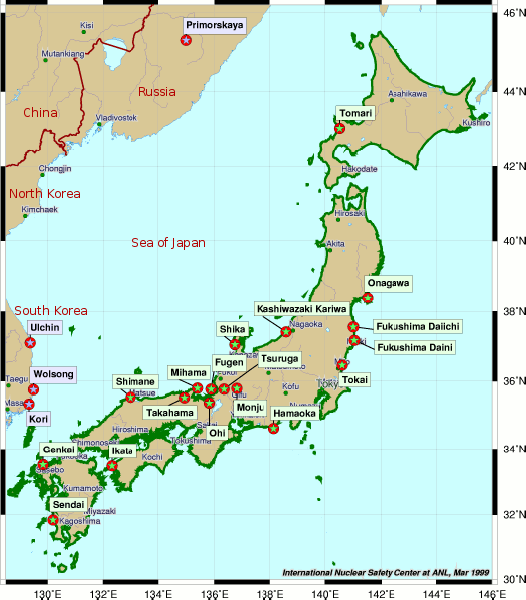The Japan Times - by Kanako Takahara - April 5, 2011
Radioactive iodine-131 readings taken from seawater near the water intake of the Fukushima No. 1 nuclear plant's No. 2 reactor reached 7.5 million times the legal limit, Tokyo Electric Power Co. admitted Tuesday.
The sample that yielded the high reading was taken Saturday, before Tepco announced Monday it would start releasing radioactive water into the sea, and experts fear the contamination may spread well beyond Japan's shores to affect seafood overseas.
The unstoppable radioactive discharge into the Pacific has prompted experts to sound the alarm, as cesium, which has a much longer half-life than iodine, is expected to concentrate in the upper food chain.
According to Tepco, some 300,000 becquerels per sq. centimeter of radioactive iodine-131 was detected Saturday, while the amount of cesium-134 was 2 million times the maximum amount permitted and cesium-137 was 1.3 million times the amount allowable.
The amount of iodine-131 dropped to 79,000 becquerels per sq. centimeter Sunday but shot up again Monday to 200,000 becquerels, 5 million times the permissible amount.




Recent Comments